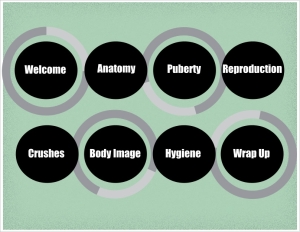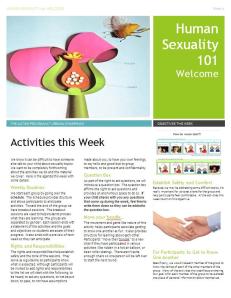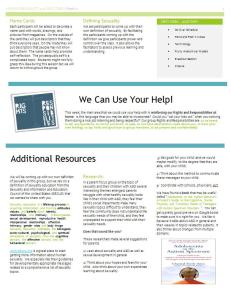Today’s Agenda
Parts and Post-it Notes: We started the group out by having them label body parts they already knew. By starting out with safe, comfortable body parts students were more prepared for unknown body parts or parts that may have caused feelings of anxiety.
Terminology: We introduced sexual terminology in written from and asked the students to say the words out loud. Between each word we’d pause and they had a worksheet with the question “I feel…” Reading a word and saying it are easier then looking at a body part so we were building their comfort level. Also, feelings of embarrassment can be difficult for students to manage. This is structuring a way for them to think about and express their feelings.
We had a lot of fun learning about anatomy although the topic was also met with groans, giggles, and our group’s favorite lamentation, “I want to throw up.” More over there was general confusion about what the parts of the body involved with reproduction even are. Essentially, they knew butt, penis, vagina, testicles and breasts but that was it.
 Fruity Anatomical Model: The students will made anatomical models of the reproductive organs using fruit. As they made the model, we talked about the function of each part. Again the fruit makes the concept a little more abstract and safe. This is a fun way to engage students in what is essentially a vocabulary task.
Fruity Anatomical Model: The students will made anatomical models of the reproductive organs using fruit. As they made the model, we talked about the function of each part. Again the fruit makes the concept a little more abstract and safe. This is a fun way to engage students in what is essentially a vocabulary task.
We saw some clear developmental differences today. The older kids in the group were able to stick with the more abstract activities and accomplish the tasks, but the younger kids in the group were a little overwhelmed. In the future, I may modify the task for younger students to focus on fewer parts of the body and instead of making the anatomical models, we could play a game with body flash cards.
Privacy: We introduced the concept that privacy is about personal things you want to keep to yourself and explained that the parts of the body we were just talking about were private body parts. We will also introduced that certain places are private, that you share with different people private information or ideas, that ideas can be private. The main distinction is that there is a difference between private and public, but we presented three levels to indicate that there is a continuum of privacy.
We were a little rushed when we got to the privacy section. It was hard for them to transition from private body parts to other concepts of privacy. Although they seemed capable of these ideas, they were a little to revved up from the anatomical models and we needed more time.
For more information on anatomy view our EXPLAINING ANATOMY, YOUTUBE EDUCATIONAL RESOURCES: HEALTHCHANNEL, SEXPLANATIONS, AND CSPH, ADULT HUMAN SEXUALITY WEEK 2- ANTATOMY & REPRODUCTION posts
Materials for Today’s Lesson

















